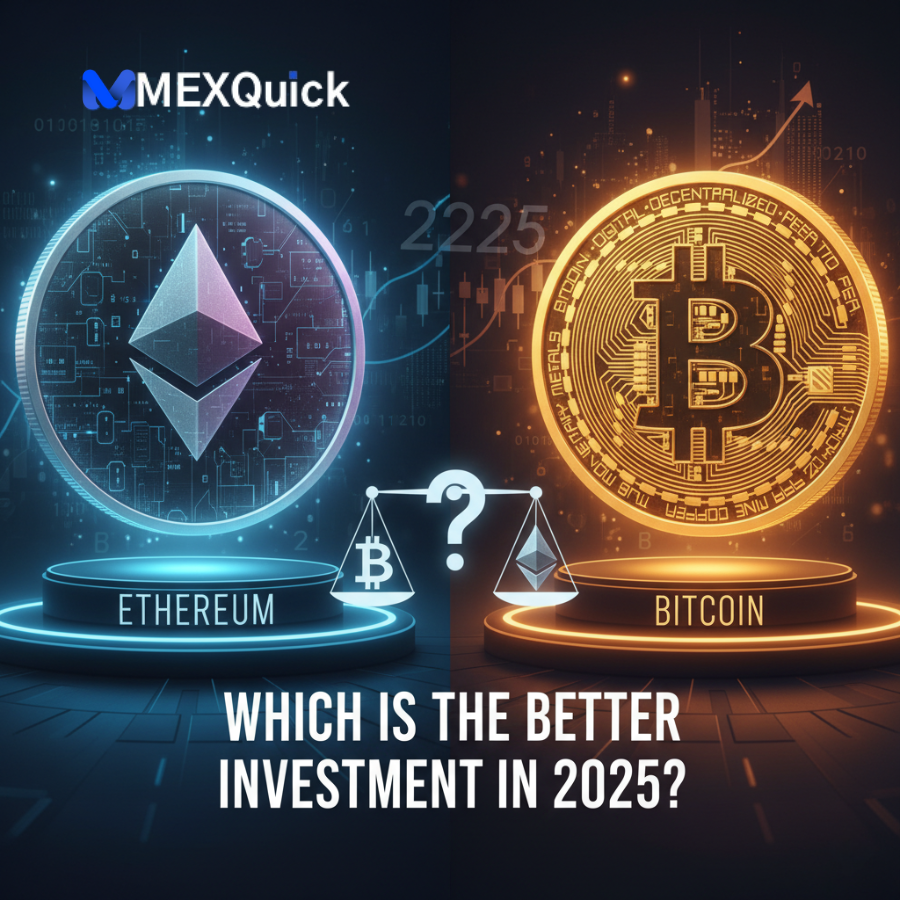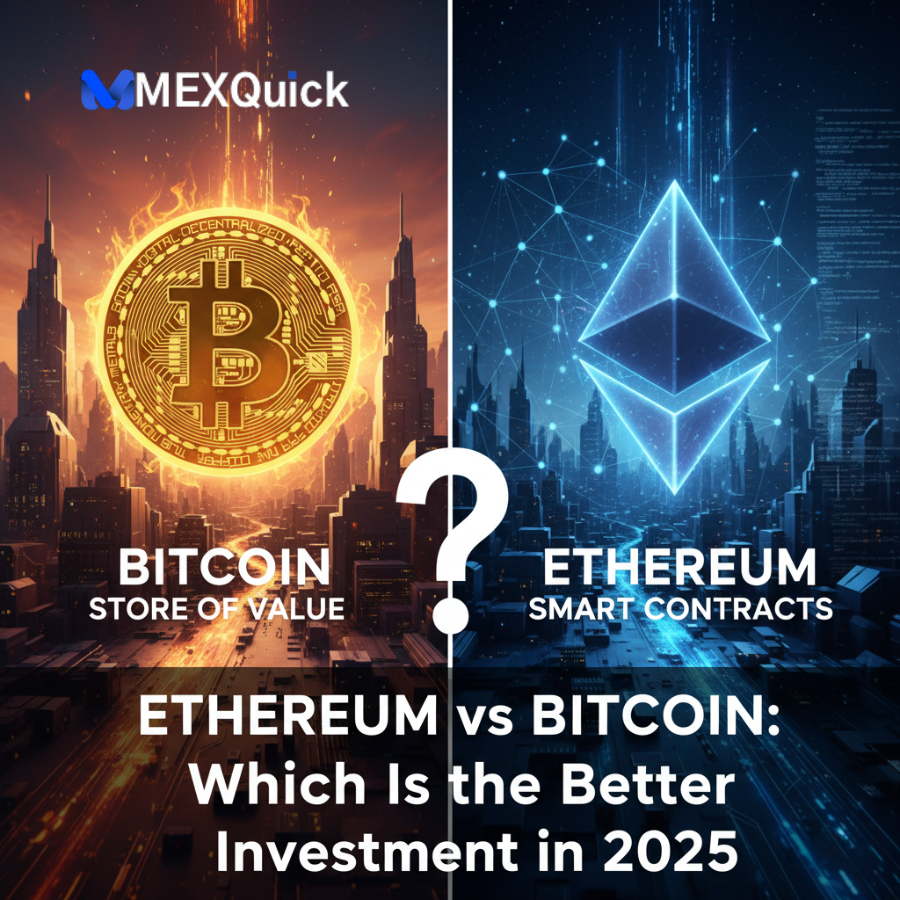Let’s be honest. If you’re reading this, you’ve probably watched the crypto rollercoaster with a mix of fascination and fear. You see the headlines—Bitcoin smashing new all-time highs, Ethereum fueling a new digital economy—and you’re left wondering: “Where should I actually put my money?”
This isn’t just about picking a winner; it’s about understanding two fundamentally different assets. Bitcoin is often seen as “digital gold,” a store of value. Ethereum, meanwhile, is more like a “digital ocean,” a vast ecosystem of applications. As we look toward 2025, the question isn’t just which one will have a higher price, but which one aligns with your investment strategy and belief in the future of technology.
I’ve analyzed the charts, dug into the tech, and spoken with experts. In this guide, we’ll cut through the hype and break down the Ethereum vs Bitcoin debate into an actionable framework, so you can make an informed decision for your portfolio.
The Fundamental Difference: Digital Gold vs. The Digital World
Before we compare price predictions or technical specs, you need to grasp the core philosophical difference. This is the foundation of your entire Ethereum vs BTC investment decision.
Bitcoin: The Pioneer and Store of Value
Bitcoin, created by the anonymous Satoshi Nakamoto, was designed with one primary purpose: to be a decentralized, peer-to-peer electronic cash system and a hedge against traditional finance. Over time, its narrative has solidified around being “digital gold.”
- Scarcity: There will only ever be 21 million Bitcoin. This fixed, predictable supply is a key part of its value proposition, especially in an era of quantitative easing and inflation.
- Simplicity & Security: The Bitcoin network is incredibly secure, powered by an immense amount of computational power (hash rate). Its primary function is to be a robust and secure ledger. It does one thing and does it exceptionally well.
- Brand Recognition: Bitcoin is synonymous with cryptocurrency. It’s the first-mover and the asset most institutional investors think of first.
Ethereum: The Programmable World Computer
Ethereum, proposed by Vitalik Buterin, was built as a platform. Its native currency, Ether (ETH), is the fuel that powers this network. Think of it less as currency and more as a commodity—like oil or gas—for a digital economy.
- Utility: Ethereum’s blockchain allows for “smart contracts”—self-executing contracts with the terms directly written into code. This enables:
- DeFi (Decentralized Finance): Lending, borrowing, and earning interest without a bank.
- NFTs (Non-Fungible Tokens): Unique digital assets for art, collectibles, and more.
- dApps (Decentralized Applications): Thousands of applications running on a decentralized network.
- Flexibility & Evolution: Ethereum continuously evolves. Its major upgrade, “The Merge,” transitioned it from energy-intensive Proof-of-Work to the more efficient Proof-of-Stake, setting the stage for future scalability improvements.
Head-to-Head: The 2025 Investment Showdown
Now, let’s put them side-by-side across the key metrics that matter for an investor.
1. Technology and Use Case
- Bitcoin: The technology is stable and conservative. Its roadmap focuses on strengthening its role as a store of value, with developments like the Lightning Network improving transaction speed for smaller payments. The use case is primarily “saving” or “hodling.”
- Ethereum: The technology is dynamic and rapidly evolving. The focus for 2025 is on continued upgrades (like “Danksharding”) to drastically reduce transaction fees and increase network capacity. The use case is boundless, powering the vast majority of Web3 innovation.
The Takeaway: If you believe in a simple, robust store of value, Bitcoin leads. If you believe the future of the internet will be built on blockchain, Ethereum is the clear choice.
2. Supply and Inflation
- Bitcoin: Perfectly inelastic supply. The issuance rate is cut in half approximately every four years in an event called the “halving.” The 2024 halving reduced the block reward to 3.125 BTC. This predictable scarcity is a powerful economic model.
- Ethereum: Post-Merge, Ethereum’s issuance is more flexible and complex. Ether is issued to stakers, but a mechanism called EIP-1559 “burns” (destroys) a portion of the fees paid for transactions. During periods of high network usage, more ETH is burned than issued, making the network deflationary.
3. Market Position and Adoption
- Bitcoin: The institutional darling. The approval of Spot Bitcoin ETFs in 2024 by the SEC was a watershed moment, opening the floodgates for traditional finance capital. It’s seen as a macro asset, often correlated with other risk-on assets like tech stocks.
- Ethereum: The developer’s choice. It boasts the largest ecosystem of developers, dApps, and total value locked (TVL) in DeFi. While it also has ETFs, its adoption is driven by organic, technological growth and enterprise use cases.
Expert Predictions and Price Outlook for 2025
Predicting prices is a fool’s errand, but analyzing market sentiment and on-chain data can provide a directional outlook.
- Bitcoin Optimists point to the post-halving supply shock, combined with sustained ETF inflows, as a recipe for new all-time highs in 2025. Standard Chartered has even suggested Bitcoin could reach $200,000 by the end of 2025.
- Ethereum Optimists believe that its deflationary supply shock (from high network usage) and its central role in the booming DeFi and NFT sectors will cause it to “flip” Bitcoin in market cap—an event known as “the flippening.” They argue that as the ecosystem grows, the demand for ETH as a core asset must grow with it.
It’s crucial to remember that these assets don’t exist in a vacuum. A major crypto bear market would likely drag both down, while a bull run would lift both.
Actionable Investment Strategies for 2025

So, which one should you buy? The answer might not be either/or. Here’s how to think about it.
Strategy 1: The Core-Satellite Approach
This is a balanced, professional portfolio strategy.
- Core (60-70% of your crypto allocation): Bitcoin. Treat this as your foundational, lower-risk (in a crypto context) holding. It’s your long-term store of value and hedge against economic uncertainty.
- Satellite (30-40% of your crypto allocation): Ethereum. This is your growth engine. It has higher potential upside due to its technological momentum but also carries more risk due to competition (like Solana, Avalanche) and regulatory scrutiny.
Strategy 2: The Thematic Investor
- Choose Bitcoin if your investment thesis is: “I believe fiat currencies will devalue, and I want a scarce, digital alternative to gold that is disconnected from the traditional financial system.”
- Choose Ethereum if your investment thesis is: “I believe blockchain technology will revolutionize industries like finance, gaming, and digital identity, and I want to invest in the foundational platform for that revolution.”
Strategy 3: Dollar-Cost Averaging (DCA)
Regardless of your choice, never invest a lump sum all at once. The volatility of crypto is brutal. By using a DCA strategy—investing a fixed amount of money at regular intervals (e.g., $100 every week)—you smooth out your purchase price and avoid the stress of trying to time the market.
Conclusion: So, Which Is the Better Investment for You?
The Ethereum vs Bitcoin debate doesn’t have a one-size-fits-all answer. It’s a question of your personal financial goals and your vision of the future.
- Choose Bitcoin if: You want a relatively simple, proven store of value. You’re betting on its scarcity and its role as “digital gold” in a digitizing world. You prefer a set-it-and-forget-it asset for the long haul.
- Choose Ethereum if: You are bullish on the broader potential of Web3 and decentralized applications. You’re making a bet on technological utility and ecosystem growth, accepting higher complexity for potentially higher returns.
Your Actionable Next Steps:
- Define Your Thesis: Are you a “digital gold” believer or a “world computer” visionary? Your belief should guide your primary allocation.
- Consider a Balanced Portfolio: For most investors, holding both as part of a diversified Ethereum vs BTC investment strategy is the most prudent path.
- Start Small and DCA: Don’t go all in. Begin with a small amount you’re comfortable losing and use dollar-cost averaging to build your position over time.
The crypto market in 2025 will be shaped by technology, regulation, and global macroeconomics. By understanding the core strengths of both Bitcoin and Ethereum, you can position yourself not as a speculator, but as a strategic investor.
I’d love to hear from you. Which asset aligns more with your strategy for 2025—Bitcoin or Ethereum? Drop a comment below and share your perspective.

